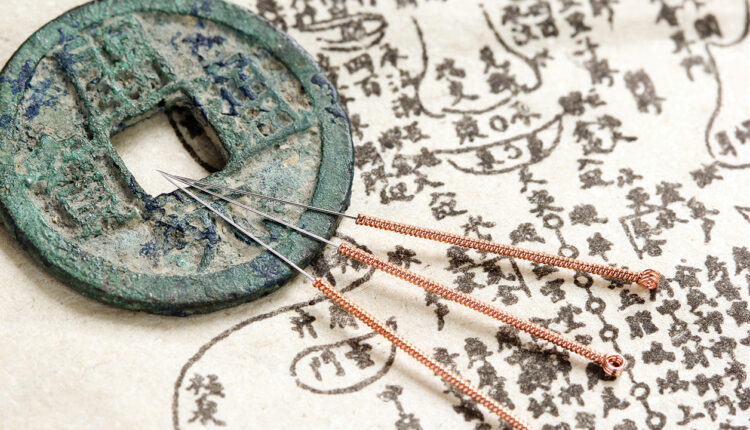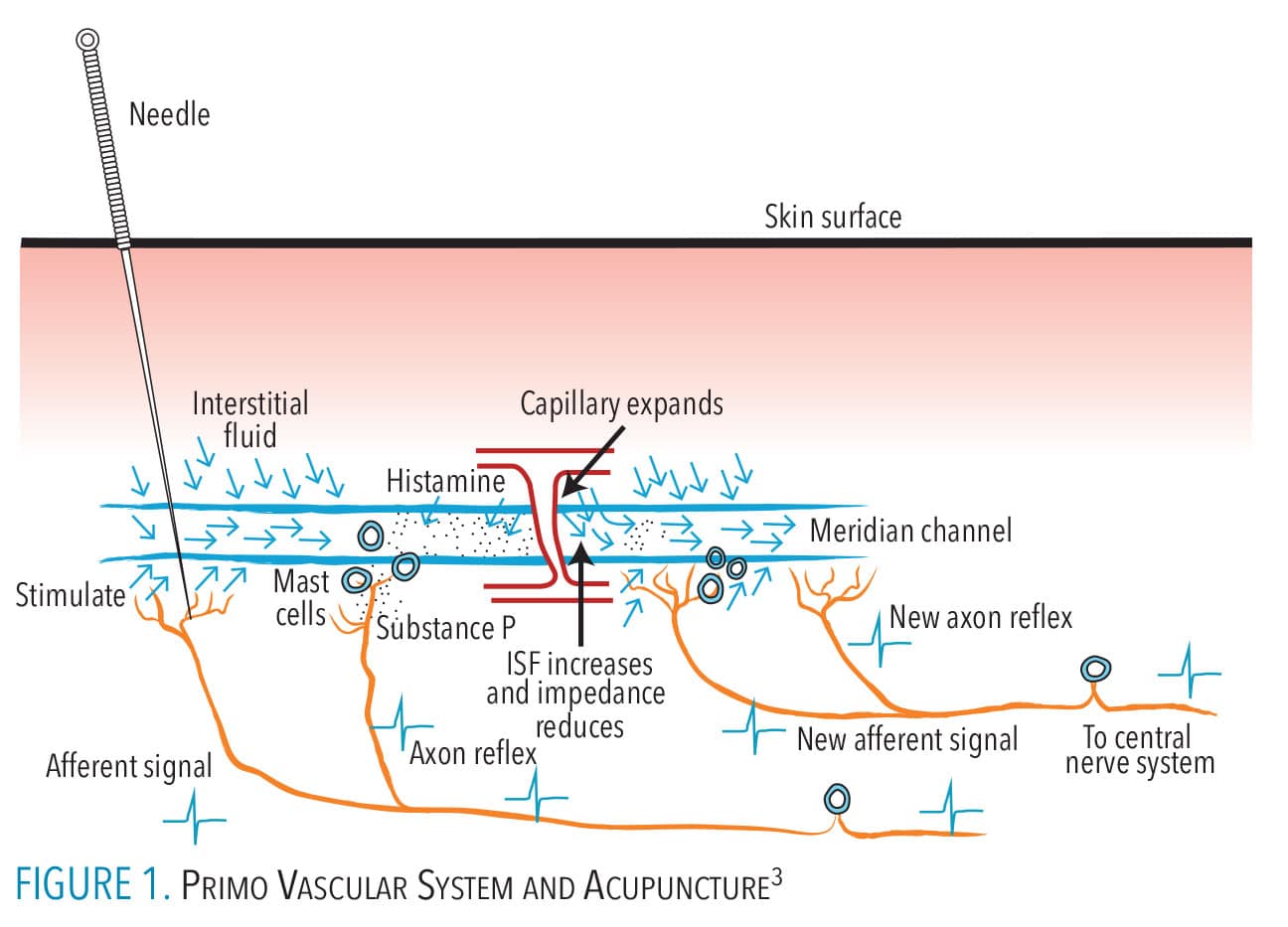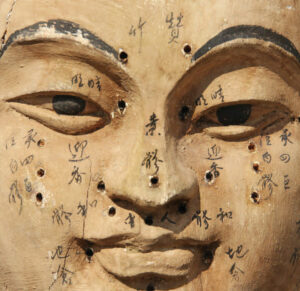 yuelan / istock / getty images plus
yuelan / istock / getty images plus
Understanding Tooth Meridians
The concept of energy flow within the body impacting health has implications for the oral cavity as well.
This course was published in the July/August 2023 issue and expires August 2026. The authors have no commercial conflicts of interest to disclose. This 2 credit hour self-study activity is electronically mediated.
AGD Subject Code: 149
Educational Objectives
After reading this course, the participant should be able to:
1. Identify fundamental principles of the meridian theory and the association between specific teeth and organs.
2. Describe the primo vascular system.
3. Discuss ways in which culture influences a patient’s decision to seek out complementary and alternative medicine therapies.
The practice of holistic or biological dentistry encompasses energy medicine and meridians of the body, specifically, how meridians associate with teeth and related organs. The concept of energy encourages physical, psychological, and spiritual health and well-being.1 For more than 5,000 years, Chinese medicine practitioners have recognized the association between energy in the body and well-being.2
Disturbances in cell energy or movement can precede abnormal patterns of cellular organization and growth.3,4 The concept of meridians comes from traditional Chinese medicine (TCM) and encompasses theoretical concepts about how energy flows throughout the body, similar to the circulatory system.5 If a blockage of energy occurs, negative side effects, including fatigue, edema, and lymphatic problems, may occur.3
In TCM, the meridian theory is a key component to understanding and treating the human body. This theory is based on the belief that there is a meridian system network composed of 12 main bilateral meridian channels traveling throughout the body’s connective tissue.3,6,7
Each of the 12 principal meridian paths is associated with an organ, such as the heart, pericardium, lung, spleen, liver, kidney (the yin organs) and stomach, gallbladder, large and small intestine, urinary bladder and tri-heater or triple burner (the yang organs).2,7 Table 1 lists the 12 main meridian channels.
![]() Meridians and the Primo Vascular System
Meridians and the Primo Vascular System
In modern medicine, the body’s organs are described by their anatomical structure and functions. In TCM, organs are considered functional units of the body. Ying organs produce, transform, regulate, and store fundamental substances such as Qi, blood, and body fluids. Yang organs, on the other hand, are responsible for digestion and transmitting nutrients.5
In TCM, the bodily functions are based on a balanced relationship between these ying and yang organs. The system of channels between organs carries Qi around the body through the interstitial space of muscles, organs, bones, teeth, and other tissues.3 Qi is similar to blood. It fosters circulation, aids in the formation of blood, and facilitates movement of energy signals throughout the body.5
Telocyte cells (TCs) are responsible for the presence of Qi. They are somatic cells with long extensions called telopodes (Tps), found within the meridian channels. These cells provide junctions throughout the connective tissue of the body that communicate with other cells in the body.8
Active cells and extracellular vesicles including exosomes move along Tps, and give structural evidence for Qi, vital energy, and signal communication. More specifically, exosomes are extracellular vessels formed inside cells, are released into the blood, and contain the cell’s proteins, DNA, and RNA that travel throughout the body. Exosomes are found in several biological fluids including saliva, blood, urine, and cerebrospinal fluid.8
Meridians guide practitioners’ understanding of the flow of connected energy and pathways in cell movement. In recent years, new research and discovery have provided an anatomical basis for the meridian system called the primo vascular system (PVS). The PVS integrates the features of the cardiovascular, nervous, immune, and hormonal systems by which a physical basis for acupuncture and meridians can be depicted.9
The PVS is an independent, functional system connected through nodes and intervascular systems with layers of muscles, cells, and Qi (Figure 1).10 Qi circulates in the PVS through vessels that direct bioelectric activity, excitatory conductivity, and mechanical motility to the body’s organs.9
 The PVS for the organs are connected to all meridians; therefore, changes in the Qi fluid circulation affect the function of organ tissue.9 Blocked Qi in meridian channels can cause illness or pain by altering a meridian path when an organ is infected or an individual is under stress. Stress causes the muscles to tighten, resulting in Qi blockages in the meridians. Treatments used to restore the flow of Qi through the channels are heat, suction, acupuncture and acupressure, ozone therapy, biohacking (making lifestyle and diet changes), and natural remedies at precise points along the meridian channels.11,12
The PVS for the organs are connected to all meridians; therefore, changes in the Qi fluid circulation affect the function of organ tissue.9 Blocked Qi in meridian channels can cause illness or pain by altering a meridian path when an organ is infected or an individual is under stress. Stress causes the muscles to tighten, resulting in Qi blockages in the meridians. Treatments used to restore the flow of Qi through the channels are heat, suction, acupuncture and acupressure, ozone therapy, biohacking (making lifestyle and diet changes), and natural remedies at precise points along the meridian channels.11,12
Tooth Meridians
Each tooth is connected to a meridian that interfaces with specific organs, which can be seen in the tooth meridian chart.7,13,14 For example, tooth numbers 1, 16, 17, and 32 are part of the same meridian pathway as the heart; this means that periodontal diseases affecting tooth number 1 may also affect the heart because they are connected by a meridian path.4,13
The presence of chronic inflammation in the mouth may adversely affect other organs. Chronic inflammation triggers the body’s inflammatory response, allowing bacteria to enter the bloodstream, sometimes travelling to the heart and other organs.15
Understanding meridians may help identify oral systemic links. Some holistic dental office websites contain pictures of the tooth meridians and interactive tooth meridian charts (dentistry4health.org/interactive-tooth-chart/) so patients and practitioners can consider the dental issue that may be related to specific chronic or acute disease.
Some research demonstrates that mercury fillings, root canals, dental caries, and periodontal diseases are risk factors for systemic disease.16–18 Alleviating these issues and/or using more biocompatible restorations, products, and procedures may help to restore health and proper Qi energy flow throughout the body. When testing the flow of energy pathways, anything foreign or abnormal in the body like a tooth extraction or tooth infection can disrupt the flow of energy in a meridian.4
Root canalled teeth leave a nonvital tooth and foreign material in the body that may pose a risk for disruption of meridian pathways.4,19 Infected root canals can allow infection to travel from the tooth to an organ.17,18 This may be considered when treatment planning.
Holistic practitioners may elect to treat patients using biologically compatible materials, such as zirconia implants, placed in specific areas of the alveolar bone to limit disruption to the organs connected to these meridians.13 Research suggests that using zirconia material for implants and the precise placement of the implants aid in minimal disruption of the meridian channels.4
Oral health professionals can develop a plan that is cognitive of the meridian channels by considering a patient’s previous dental work when reviewing his or her dental and medical history.20 Meridians may also be used to provide temporary pain relief.
Acupuncture provides relief for tooth-related pain because the 12 meridians merge at the top of the head.20,21 To achieve this therapeutic effect, acupuncture needles are placed at specific acupoint sites and remain for 15 to 30 minutes. These sites have been verified through the placement of radioactive substances into the meridians to confirm the transmission of Qi flow. The patient feels this flow as a tingling or numbing sensation at the acupoint site.21,22
To confirm the theory and practice of acupuncture, one study assessed 157 patients experiencing symptomatic irreversible pulpitis.23 Participants were divided into three groups. Group I was given the acupuncture treatment described above with a placebo ibuprofen, group II received acupuncture treatments that put the needles in the skin incorrectly with a placebo ibuprofen, and group III had acupuncture treatments that put the needles in skin incorrectly with an ibuprofen. Pain was evaluated at several intervals between 15 minutes and 48 hours. Patients from group I reported significantly lower pain levels more quickly when compared to the other two groups. In group 1, 96% did not experience pain for 12 hours.
In another study, researchers looked at two patients experiencing pain in the lower right molars.24 Both patients received acupuncture at acupoints associated with the lower right molars. For one patient, the needle was placed in the large intestine acupoint on the hand. The other had a needle placed in the large intestine acupoint on the back. Within 40 seconds, both patients reported 90% pain relief.
A third study included 120 patients who received acupuncture after presenting to an emergency department with acute tooth pain.25 Patients were split into three groups, with each receiving acupuncture in one, two, or three different acupoints on the same side of the body as the dental pain. Pain reduction was seen in 72.5% of patients.
Acupuncture is also used to help restore the flow of Qi through the temporomandibular joint (TMJ).20,26 A decreased flow of energy is seen primarily in the kidney and bladder meridians that intersect the TMJ.26 Individuals with trigeminal neuralgia or TM disorder may display a reduction in pain severity after acupuncture interventions were used.27 Meridian-based therapies have been used to reduce pain and make important connections between systemic and oral disease.20
Cross-Cultural Considerations
 For many centuries, ancient healing traditions from China, India, Japan, and Tibet, as well as other countries, acknowledged vital energy flows through meridians. One of the earliest descriptions of meridians was written by Hangfu Mi in 259–282 AD.2
For many centuries, ancient healing traditions from China, India, Japan, and Tibet, as well as other countries, acknowledged vital energy flows through meridians. One of the earliest descriptions of meridians was written by Hangfu Mi in 259–282 AD.2
Meridians are named “sen” in Thailand; “nadis” in India; “meridians,” “channels,” or “vessels” in China and Japan; and “channels” in Tibet. Globally, a variety of health beliefs and practices exist, including complementary and alternative medicine (CAM). Oral health professionals need to recognize the need for cross-cultural care, or understanding of nontraditional health beliefs.28
Acknowledging and learning more about a patient’s cultural beliefs and alternative care models provide a more humanistic patient care experience.20,28 For example, holistic, biological-based oral health care in the United States includes recommending treatments like acupuncture, homeopathy, massage/spa dentistry, meditation exercises, and nutritional changes alone or in conjunction with medications and surgery. CAM and an understanding of tooth meridians highlight nontraditional medicines’ focus on disease prevention, general well-being, and a holistic approach to health.20
Holistic oral care is one of the oldest but still emerging fields of dentistry and dental hygiene where natural, biocompatible techniques are considered.29 Holistic dental and dental hygiene practice commonly follow a meridian chart in which each tooth is related to an acupuncture meridian relating to various organs, tissues, and glands (Table 2). This meridian chart is also known as the “energy highway” for the body’s innate physiological healing processes.29 A review of the meridian chart with patients who prefer a more holistic or alternative approach can be considered during the assessment, diagnoses, and treatment planning stages of patient care.
![]() Conclusion
Conclusion
The effect of oral health on overall health is considered in both the Eastern and Western approaches to medicine and dentistry. Understanding CAM practices, including meridian theories, is key to providing patient-centered care. Inclusion of holistic or biological CAM-based care may improve understanding of a broader alternative practice and its successful implementation in clinical practice.
References
- Siddiqui R. Application of alternative medicine in dentistry: an overview. Advances in Dentistry & Oral Health. 2018;9(1):49–51.
- Longhurst JC. Defining meridians: A modern basis of understandingJ J Acupunct Meridian Stud. 2010;3:67–74.
- Zhang WB, Wang GJ, Fuxe K. Classic and modern meridian studies: a review of low hydraulic resistance channels along meridians and their relevance for therapeutic effects in traditional Chinese medicine. Evid Based Complement Alternat Med. 2015;2015:1–14.
- Voll R. Electroacupuncture (EAV) Diagnostic and treatment results in odontogenous focal events. American Journal of Acupuncture. 1981;9(4):293–301.
- Sun J, Zhang L, He Y, et al. To unveil the molecular mechanisms of Qi and blood through systems biology-based investigation into si-jun-zi-tang and Si-Wu-Tang formulae. Scientific Reports. 2016;6:1.
- Epidemic Answers. Meridian-based therapies. Available at: epidemicanswers.o/g/reference-library/mind-body-spirit/meridian-based-therapies. Accessed June 19, 2023.
- Voll R. Twenty years of electroacupuncture diagnosis in Germany: a progress report. Am J Acupuncture. 1975;3:7–17.
- Yonghong S, Ruizhi W, Yue Z, et al. Telocytes in different organs of vertebrates: Potential essence cells of the meridian in Chinese traditional medicine. Microsc Microanal. 2020;26:575–588.
- Stefanov M, Potroz M, Kim J, et al. The primo vascular system as a new anatomical system. J Acupunct Meridian Stud. 2013;6:331–338.
- Zhang WB, Tian YY, Li H, et al. A discovery of low hydraulic resistance channel along meridians. J Acupunct Meridian Stud. 2018;1:20–28.
- National Cancer Institute. Chinese meridian theory. Available at: cancer.gov/publications/dictionaries/cancer-terms/def/chinese-meridian-theory. Accessed June 19, 2023.
- Sharma M, Rush SE. Mindfulness-based stress reduction as a stress management intervention for healthy individuals: a systemic review. J Evid Based Complementary Altern Med. 2014;19:271–286.
- Vergote S. Biological dentistry and its positive effects on the whole body. Current Trends in Complementary and Alternative Medicine. 2019;2019(01):1–9.
- Printable. Tooth Chart Printable Full Sheet. Available at: printablee.com/po_t_tooth-chart-printable-full-sheet_쳞. Accessed June 19, 2023.
- Figuero E, Sánchez-Beltrán M, Cuesta-Frechoso S, et al. Detection of periodontal bacteria in atheromatous plaque by nested polymerase chain reaction. J Periodontol. 2011;82:1469–1477.
- Al-Saleh I, Al-Sedairi AA, Elkhatib R. Effect of mercury (hg) dental amalgam fillings on renal and oxidative stress biomarkers in children. Sci Total Environ. 2012;431:188–196.
- Lechner J, Baehr V. Impact of endodontically treated teeth on systemic diseases. Dentistry. 2018;8(3):476.
- Gomes C, Martinho FC, Barbosa DS, et al. Increased root canal endotoxin levels are associated with chronic apical periodontitis, increased oxidative and nitrosative stress, major depression, severity of depression, and a lowered quality of life. Mol Neurobiol. 2017;55(4):2814-2827.
- Bakhru A. Nutrition and Integrative Medicine: a Primer for Clinicians. Boca Raton, Florida: CRC Press; 2019.
- Abuzenada BM, Pullishery F, Elnawawy MSA, et al. Complementary and alternative medicines in oral health care: an integrative review. J Pharm Bioallied Sci. 2021;13:S892–S897.
- Aung SKH. Traditional Chinese medicine in modern dentistry. Alternative and Complementary Therapies. 1998;4(6):430–434.
- Zhang W, Jia D, Li H, et al. Understanding Qi running in the meridians as interstitial fluid flowing via interstitial space of low hydraulic resistance. Chinese Journal of Integrative Medicine. 2018;24(4):304–307.
- Murugesan H, Venkatappan S, Renganathan SK, et al. Comparison of acupuncture with ibuprofen for pain management in patients with symptomatic irreversible pulpitis: a randomized double-blind clinical trial. J Acupunct Meridian Stud. 2017;10:396–401.
- Abdurachman A. Acupuncture analgesia: the complementary pain management in dentistry. Dental Journal (Majalah Kedokteran Gigi). 2011;44(1):25–29.
- Grillo CM, Wada RS, Sousa MD. Acupuncture in the management of acute dental pain. J Acupunct Meridian Stud. 2014;7:65–70.
- Rasera Zotelli VL, Grillo CM, Bressiani Gil ML, et al. Patterns of energy imbalance of the meridians in patients with temporomandibular dysfunction. J Acupunct Meridian Stud.2018;11:1–6.
- Noiman M, Garty A, Maimon Y, et al. Acupuncture for treating temporomandibular disorder: Retrospective study on safety and efficacy. J Acupunct Meridian Stud. 2010;3:260–266.
- Campinha-Bacote J. The process of cultural competence in the delivery of healthcare services: a model of care. J Transcult Nurs. 2002;13:181–184.
- Nayak A, Tamgadge S. Holistic dentistry-tooth as an anchor to mind, body, and soul. Journal of Integrated Health Science. 2022;9(2):94-98.
From Dimensions of Dental Hygiene. July/August 2023; 21(7):28-31.





